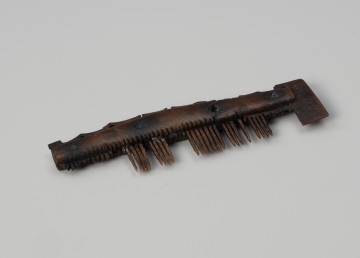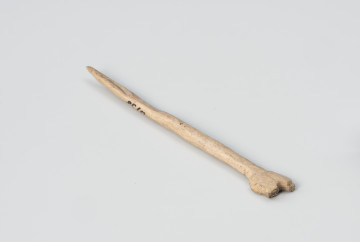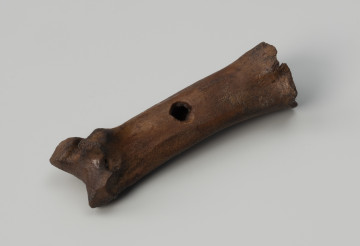
One sided comb
801 — 1201
National Museum in Szczecin
Part of the collection: Middle Ages
The first runic characters emerged among the Germanic peoples around the middle of the 2nd century AD – initially, this set of characters included 24 runes of the alphabet referred to as the Elder Fuþark. In the later period – around the 9th century – the number of characters was reduced to just 16 – forming the so-called Younger Fuþark. In many cases, runes are associated with mysterious occult rites and magic, some believed they had medicinal properties. A bone with runic inscriptions discovered at the stronghold in Kamień dates back to the 1st half of the 11th century and is closely connected with the presence of Scandinavians among the Slavic inhabitants of Kamień. Numerous objects analogous to the bone with runic inscriptions from the early 11th century were found in Hedeby in Denmark and Bergen in Norway. A wooden plank with engraved runes, which dates back to the end of the 10th century, was also discovered in nearby Wolin. A bone with runes from Kamień Pomorski is a fragment of a rib of an animal of undetermined species, with traces of fractures on both sides. Its surface is smoothed. Both sides bear shallow knife-cut runic characters, which form the inscription – FUTH (the beginning of the Younger Fuþark) on one side and KUR (most likely a male name) on the other.
Grzegorz Durdyń
Author / creator
Dimensions
cały obiekt: height: 9.5 cm, width: 2.2 cm
Object type
information form, ritual object, animal bone
Technique
printing, boring
Material
bone
Origin / acquisition method
field research
Creation time / dating
Creation / finding place
Owner
Muzeum Narodowe w Szczecinie
Identification number
Location / status

801 — 1201
National Museum in Szczecin

800 — 1200
National Museum in Szczecin

1001 — 1201
National Museum in Szczecin
DISCOVER this TOPIC
National Museum in Szczecin
DISCOVER this PATH
Educational path